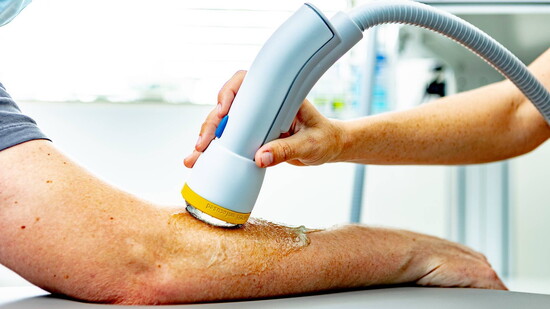In a world where we prioritize financial investments, we often overlook the most important one—our health. SoftWave regenerative therapy is emerging as a game-changer in non-invasive treatment, offering promising results for those suffering from neuropathy, chronic pain, and even post-surgical recovery. Dr. Brent Reiche of Active Chiropractic in Saco is leading the charge as the only provider of SoftWave therapy in southern Maine. In this Q&A, he breaks down the therapy, its benefits, and why investing in proactive care pays dividends.
Can you explain what SoftWave regenerative therapy is and how it works?
Absolutely. SoftWave is a truly non-invasive regenerative therapy that utilizes hypersonic sound waves to stimulate the body’s natural healing response. Unlike other treatments that claim to be non-invasive but require injections, SoftWave does not involve needles or medication. It works by mimicking the body’s pain signals, triggering a healing response that recruits stem cells to damaged tissue, promoting regeneration and pain relief.
What conditions is SoftWave most effective for?
SoftWave therapy is incredibly versatile. It’s used across multiple medical fields, from orthopedics to dermatology to pelvic health. In our practice, we see the greatest success with neuropathy patients. Neuropathy, which often results from chemotherapy or diabetes, causes loss of sensation in the hands and feet. There’s no known cure, but we’ve had patients regain significant feeling and function after just one session.
What does a typical session look like?
We begin with a standardized neurology test called the Toronto Clinical Scoring System, which measures the patient’s ability to sense sharpness, temperature, vibration, and touch. Then, we use the SoftWave device to scan for damaged tissue. If there’s no damage, the sensation is minimal—just a light tapping. However, if damaged tissue is present, the therapy “lights up” the area, mimicking a pain response that signals the brain to send healing factors. Most patients feel relief after just one session, and we’ve had people cry from joy after regaining feeling in their feet for the first time in years.
Are there any side effects?
None. Because it’s non-invasive, there’s no downtime or recovery period. The only discomfort comes if the therapy identifies damaged tissue, but that’s a sign that healing is happening.
Many people wait until they’re in pain to seek treatment. Why is proactive care important?
Because it’s cheaper and gives you more choices. Whether we’re talking about the stock market or your health, waiting until there’s a crisis means you’ll have to put in significantly more time, money, and effort to recover. Investing early in your health—whether through movement, hydration, or preventative treatments—delivers long-term dividends in longevity and quality of life. If you wait too long, your options become limited.
Do patients come specifically for SoftWave therapy, or do they discover it through other treatments?
Both. Some patients seek us out because they’ve heard about SoftWave’s benefits, while others are introduced to it as part of a comprehensive wellness plan. It can be used as a standalone treatment or in conjunction with other therapies like spinal decompression, stem cell therapy, and doctor-supervised weight loss.
What are some common misconceptions about SoftWave therapy and chiropractic care?
A big misconception about chiropractic care is that once you start, you can never stop. That’s like saying you should only eat well until you feel better—health is a lifelong commitment. As for SoftWave, some people assume it’s a magic wand. While it does produce dramatic results, not everyone experiences instant relief. Sometimes, it takes a few sessions, and for others, maintenance treatments may be needed.
If someone wants to invest in their long-term health, where should they start?
The basics: drink more water, move your body, and prioritize recovery through sleep. Everyone knows what they should be doing, but many don’t follow through. Health doesn’t come from medication or surgery alone—it comes from consistent, proactive choices. Chiropractic care, SoftWave therapy, and other natural treatments work with the body rather than forcing it into temporary fixes.
Can you share a success story?
One of my favorite cases was a high school basketball player who had an ACL tear. We treated her both pre- and post-surgery, and after just one SoftWave session, she had reduced pain and increased range of motion. She was amazed at how much better she felt immediately. SoftWave is great for post-surgical healing because it speeds up recovery and reduces inflammation.
What’s your final message for people considering SoftWave therapy?
Invest in your health now, and you’ll have more options down the road. If you’re in pain or struggling with a chronic condition, SoftWave might be the breakthrough you’ve been looking for. And if we determine it’s not the right fit, we’ll help you find an alternative that is. Your health is your greatest asset—treat it that way.
Investing early in your health—whether through movement, hydration, or preventative treatments—delivers long-term dividends in longevity and quality of life.
